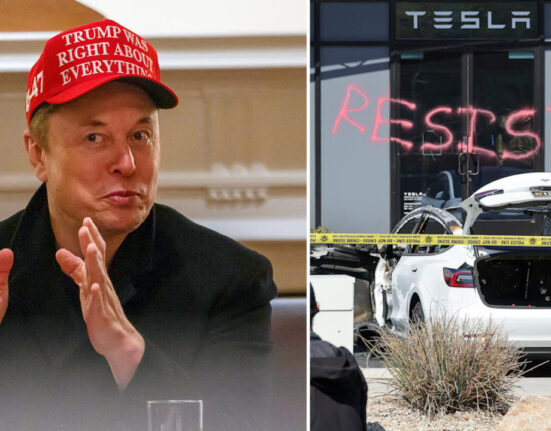The newsroom buzzed with excitement as the announcement echoed through the hallways of The Washington Post. A new era was dawning for the opinion section, and all eyes were on the man who would be leading this transformation – Adam O’Neal.
“Odds are, you’ve probably never heard of me and you might be wondering: Who am I?”
Adam O’Neal, a seasoned journalist with a background at The Economist and The Wall Street Journal, was handpicked to steer the ship in a bold new direction. His mission? To champion “personal liberties and free markets,” a vision outlined by none other than Jeff Bezos himself.
As journalists huddled around their screens to watch the video introduction from Mr. O’Neal, there was a sense of anticipation in the air. His words resonated with promise as he vowed to make the section “unapologetically patriotic” while leveraging technology to enhance journalistic integrity.
Shifting Sands in Opinion Land
The decision to bring Adam O’Neal on board marked a significant shift in direction for The Washington Post’s opinion pages. With David Shipley’s resignation earlier that year following pressure to realign ideological stances, it was clear that change was not only desired but necessary.
Under Bezos’ leadership, there had been a strategic refocusing towards economic and personal liberty themes within the opinion section. This move stirred both curiosity and controversy among readers accustomed to a diverse range of political perspectives.
A Stormy Year Unfolds
The past year had been tumultuous for The Post’s opinion pages. From discontinuing presidential endorsements to losing key staff members like Ann Telnaes over editorial disputes, it seemed like every decision sparked heated debate within and outside the newsroom.
Mr. Shipley’s departure sent shockwaves through the team, signaling a broader restructuring initiative aimed at aligning content with core values while staying relevant to an evolving readership base. Will Lewis emphasized that this shift was not about partisan politics but rather about meeting reader expectations for quality coverage.
The Ripple Effect: Future Plans Unveiled
Beyond Adam O’Neal’s appointment lay an ambitious project codenamed Ripple – an initiative set to revolutionize how opinion content is curated and delivered online. This innovative approach involved collaborations with external contributors ranging from established news outlets to emerging Substack authors.
One particularly intriguing aspect of Ripple was its integration of an AI editing tool called Ember slated for future use. This cutting-edge technology promised to streamline column creation processes while maintaining editorial standards – a potential game-changer in digital journalism circles.
In closing, as The Washington Post embarked on this path of reinvention under Adam O’Neal’s guidance, one thing remained clear: change was inevitable, but whether it would pave the way for greater journalistic impact or stir further controversy only time would tell.









Leave feedback about this